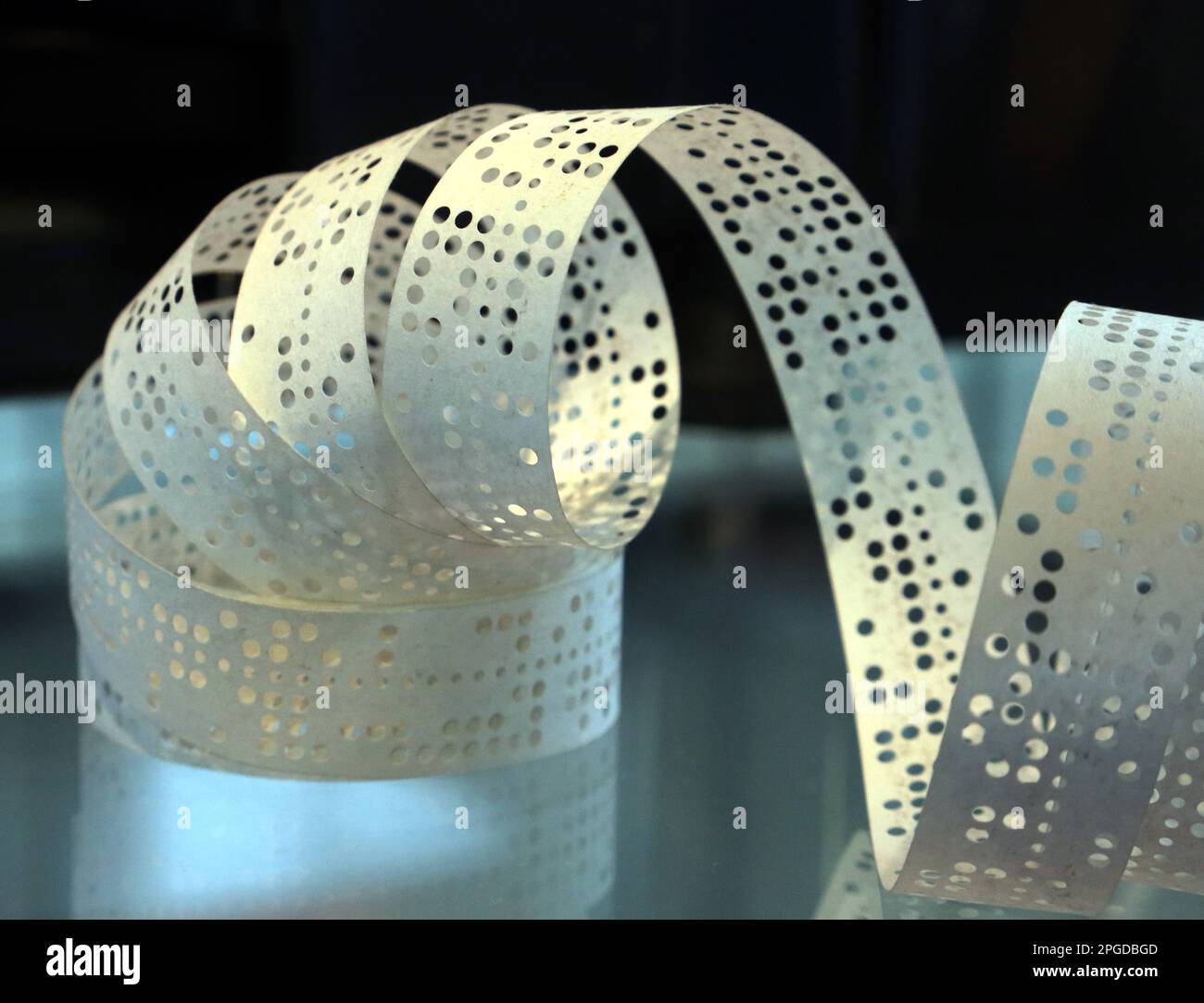Computer punched paper tape spool, used for loading programmes and data

Image details
Contributor:
Tony Smith / Alamy Stock PhotoImage ID:
2PGDBGDFile size:
39.9 MB (1 MB Compressed download)Releases:
Model - no | Property - noDo I need a release?Dimensions:
4272 x 3264 px | 36.2 x 27.6 cm | 14.2 x 10.9 inches | 300dpiDate taken:
13 March 2023Location:
Bletchley Park, Sherwood Drive, Bletchley, Milton Keynes, , England, UK, MK3 6EBMore information:
Punched tape or perforated paper tape is a form of data storage that consists of a long strip of paper in which holes are punched. It developed from and was subsequently used alongside punched cards, differing in that the tape is continuous. Punched cards, and chains of punched cards, were used for control of looms in the 18th century. Use for telegraphy systems started in 1842. Punched tape was used throughout the 19th and for much of the 20th centuries for programmable looms, teleprinter communication, for input to computers of the 1950s and 1960s, and later as a storage medium for minicomputers and CNC machine tools. During the Second World War, high-speed punched tape systems using optical readout methods were used in code breaking systems. Punched tape was used to transmit data for manufacture of read-only memory chips. Data was represented by the presence or absence of a hole at a particular location. Tapes originally had five rows of holes for data across the width of the tape. Later tapes had six, seven, or eight rows. A 1944 electro-mechanical programmable calculating machine, the Automatic Sequence Controlled Calculator or Harvard Mark I, used paper tape with 24 rows. A row of smaller sprocket holes was always punched to be used to synchronize tape movement. Originally, this was done using a wheel with radial teeth called a sprocket wheel. Later, optical readers made use of the sprocket holes to generate timing pulses. The sprocket holes were slightly closer to one edge of the tape, dividing the tape into unequal widths, to make it unambiguous which way to orient the tape in the reader. Tape for punching was usually 0.00394 inches (0.100 mm) thick. The two most common widths were 11⁄16 inch (17 mm) for five bit codes, and 1 inch (25 mm) for tapes with six or more bits. Hole spacing was 0.1 inches (2.5 mm) in both directions. Data holes were 0.072 inches (1.8 mm) in diameter; sprocket feed holes were 0.046 inches (1.2 mm)